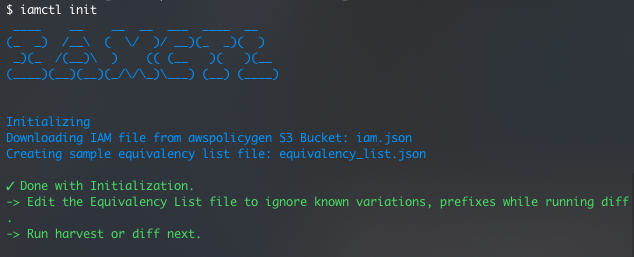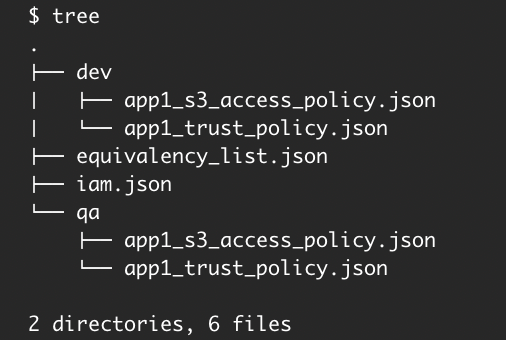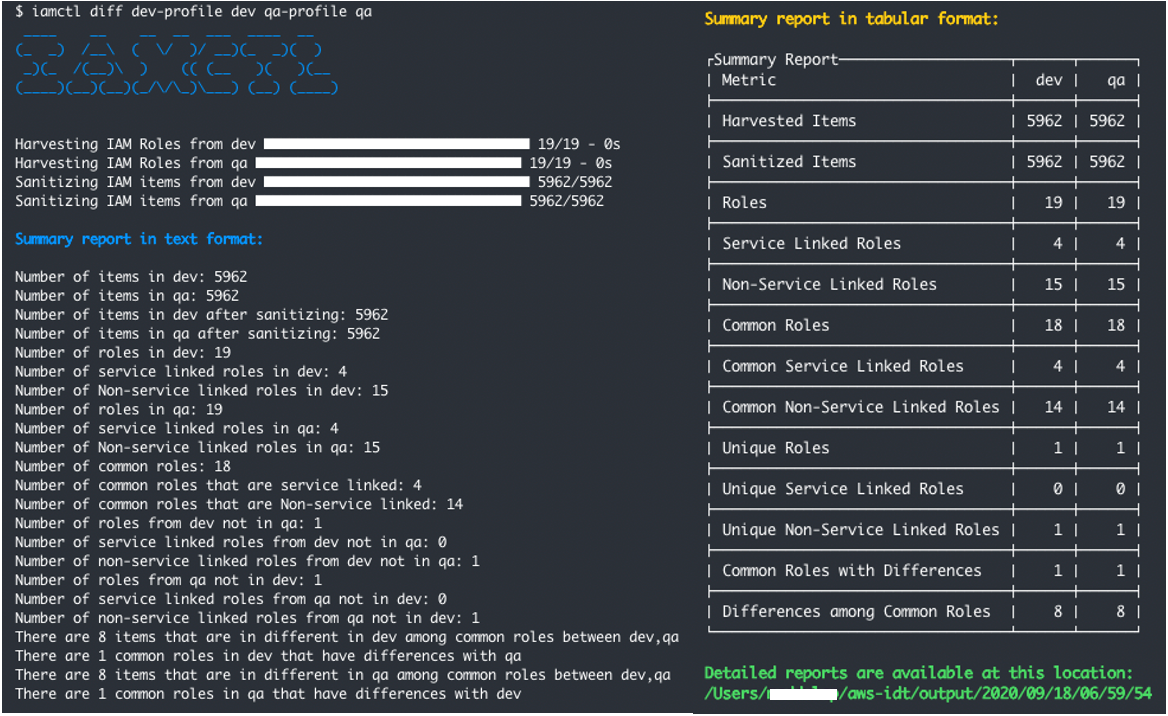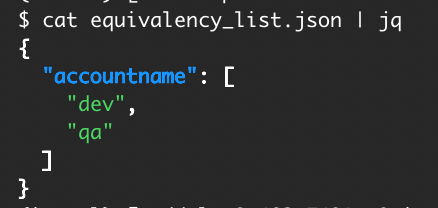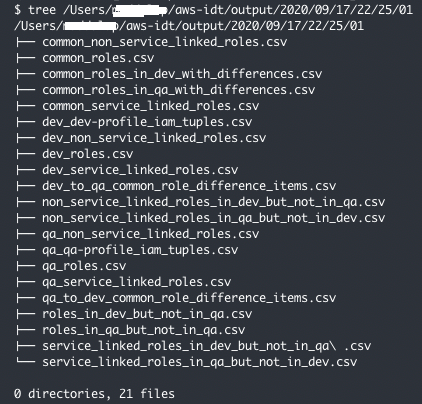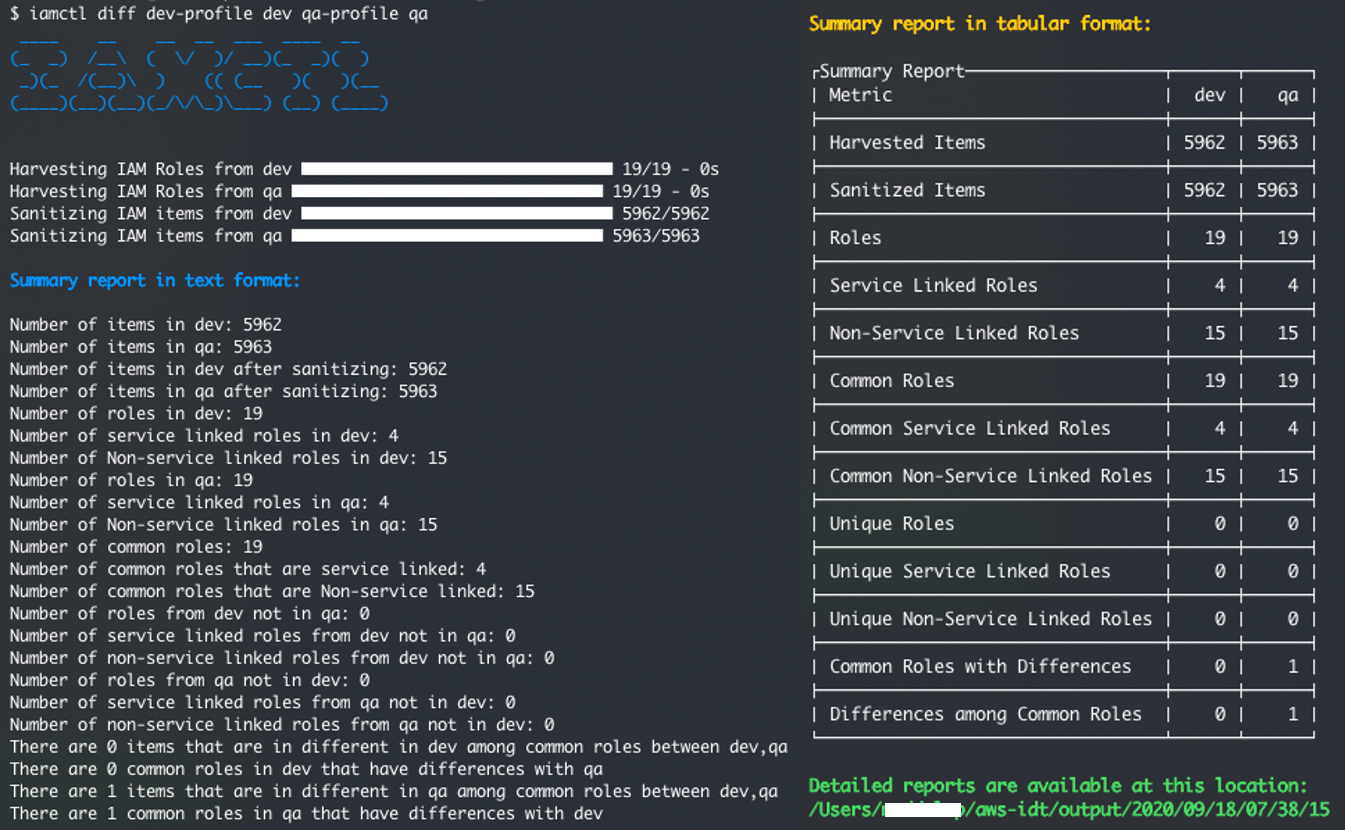Post Syndicated from Jonathan Jenkyn original https://aws.amazon.com/blogs/security/how-to-use-trust-policies-with-iam-roles/
November 3, 2022: We updated this post to fix some syntax errors in the policy statements and to add additional use cases.
August 30, 2021: This post is currently being updated. We will post another note when it’s complete.
AWS Identity and Access Management (IAM) roles are a significant component of the way that customers operate on Amazon Web Service (AWS). In this post, we will dive into the details of how role trust policies work and how you can use them to restrict how your roles are assumed.
There are several different scenarios where you might use IAM roles on AWS:
- An AWS service or resource accesses another AWS resource in your account – When an AWS resource needs access to other AWS services, functions, or resources, you can create a role that has appropriate permissions for use by that AWS resource. Services like AWS Lambda and Amazon Elastic Container Service (Amazon ECS) assume roles to deliver temporary credentials to your code that’s running in them.
- An AWS service generates AWS credentials to be used by devices running outside AWS –
AWS IAM Roles Anywhere, AWS IoT Core, and AWS Systems Manager hybrid instances can deliver role session credentials to applications, devices, and servers that don’t run on AWS.
- An AWS account accesses another AWS account – This use case is commonly referred to as a cross-account role pattern. It allows human or machine IAM principals from one AWS account to assume this role and act on resources within a second AWS account. A role is assumed to enable this behavior when the resource in the target account doesn’t have a resource-based policy that could be used to grant cross-account access.
- An end user authenticated with a web identity provider or OpenID Connect (OIDC) needs access to your AWS resources – This use case allows identities from Facebook or OIDC providers such as GitHub, Amazon Cognito, or other generic OIDC providers to assume a role to access resources in your AWS account.
- A customer performs workforce authentication using SAML 2.0 federation – This occurs when customers federate their users into AWS from their corporate identity provider (IdP) such as Okta, Microsoft Azure Active Directory, or Active Directory Federation Services (ADFS), or from AWS Single Sign-On (AWS SSO).
An IAM role is an IAM principal whose entitlements are assumed in one of the preceding use cases. An IAM role differs from an IAM user as follows:
- An IAM role can’t have long-term AWS credentials associated with it. Rather, an authorized principal (an IAM user, AWS service, or other authenticated identity) assumes the IAM role and inherits the permissions assigned to that role.
- Credentials associated with an IAM role are temporary and expire.
- An IAM role has a trust policy that defines which conditions must be met to allow other principals to assume it.
Managing access to IAM roles
Let’s dive into how you can control access to IAM roles by understanding the policy types that you can apply to an IAM role.
There are three circumstances where policies are used for an IAM role:
- Trust policy – The trust policy defines which principals can assume the role, and under which conditions. A trust policy is a specific type of resource-based policy for IAM roles. The trust policy is the focus of the rest of this blog post.
- Identity-based policies (inline and managed) – These policies define the permissions that the user of the role is able to perform (or is denied from performing), and on which resources.
- Permissions boundary – A permissions boundary is an advanced feature for using a managed policy to set the maximum permissions for a role. A principal’s permissions boundary allows it to perform only the actions that are allowed by both its identity-based permissions policies and its permissions boundaries. You can use permissions boundaries to delegate permissions management tasks, such as IAM role creation, to non-administrators so that they can create roles in self-service.
For the rest of this post, you’ll learn how to enforce the conditions under which roles can be assumed by configuring their trust policies.
An example of a simple trust policy
A common use case is when you need to provide access to a role in account A to assume a role in Account B. To facilitate this, you add an entry in the role in account B’s trust policy that allows authenticated principals from account A to assume the role through the sts:AssumeRole API call.
Important: If you reference :root in an IAM role’s trust policy, you might allow more principals to assume your role than you intended, so it’s a best practice to use the Principal element or conditions to only allow specific principals or paths to assume a role. Later in this post, we show you how to limit this access to more specific principals.
{
"Version": "2012-10-17",
"Statement": [
{
"Effect": "Allow",
"Principal": {
"AWS": "arn:aws:iam::111122223333:root"
},
"Action": "sts:AssumeRole"
}
]
}
This trust policy has the same structure as other IAM policies with Effect, Action, and Condition components. It also has the Principal element, but no Resource element. This is because the resource is the IAM role itself. For the same reason, the Action element will only ever be set to relevant actions for role assumption.
Note: The suffix :root in the policy’s Principal element equates to the principals in the account, not the root user of that account.
Using the Principal element to limit who can assume a role
In a trust policy, the Principal element indicates which other principals can assume the IAM role. In the preceding example, 111122223333 represents the AWS account number for the auditor’s AWS account. This allows a principal in the 111122223333 account with sts:AssumeRole permissions to assume this role.
To allow a specific IAM role to assume a role, you can add that role within the Principal element. For example, the following trust policy would allow only the IAM role LiJuan from the 111122223333 account to assume the role it is attached to.
{
"Version": "2012-10-17",
"Statement": [
{
"Effect": "Allow",
"Principal": {
"AWS": "arn:aws:iam::111122223333:role/LiJuan"
},
"Action": "sts:AssumeRole"
}
]
}
The principals included in the Principal element can be a principal defined within the IAM documentation, and can refer to an AWS or a federated principal. You can’t use a wildcard (“*” or “?”) within the Principal element for a trust policy, other than one case which we will cover later. You must define precisely which principal you are referring to because there is a translation that occurs when you submit your trust policy that ties it to each principal’s ID. For more information, see Why is there an unknown principal format in my IAM resource-based policy?
If an IAM role has a principal from the same account in its trust policy directly, that principal doesn’t need an explicit entitlement in its identity-attached policy to assume the role.
Using the Condition element in a trust policy
The Condition element in a role trust policy sets additional requirements for the Principal trying to assume the role. The Condition element is a flexible way to reduce the set of users that are able to assume the role without necessarily specifying the principals.
Condition elements of role trust policies behave identically to condition elements in identity-based policies and other resource policies on AWS.
Using SAML identity federation on AWS
Federated users from a SAML 2.0 compliant IdP are given permissions to access AWS accounts through the use of IAM roles. The mapping of which enterprise users get which roles is established within the directory used by the SAML 2.0 IdP and is placed inside the signed SAML assertion by the IdP.
The Principal element of a role trust policy for SAML federation contains the ARN of the SAML IdP in the same AWS account. IdPs in other accounts can’t be referenced. Roles assumed by SAML federation can use SAML-specific condition keys in their role trust policy.
A role trust policy for a role to be assumed by SAML places the ARN of the SAML IDP in the Principal element, and checks the intended audience (SAML:aud) of the SAML assertion. Setting the audience condition is important because it means that only SAML assertions intended for AWS can be used to assume a role:
{
"Version": "2012-10-17",
"Statement": {
"Effect": "Allow",
"Action": "sts:AssumeRoleWithSAML",
"Principal": {"Federated": "arn:aws:iam::account-id:saml-provider/PROVIDER-NAME"},
"Condition": {"StringEquals": {"SAML:aud": "https://signin.aws.amazon.com/saml"}}
}
}
The AWS documentation covers creating roles for SAML 2.0 federation in detail. For information about how to manage the role trust policies of roles assumed by SAML from multiple AWS Regions for resiliency, see the blog post How to use regional SAML endpoints for failover.
For federating workforce access to AWS, you can use AWS IAM Identity Center (successor to AWS Single Sign-On) to broker access to IAM roles through SAML. Roles managed by IAM Identity Center can’t have their trust policy modified by IAM directly.
SAML IDPs used in a role trust policy must be in the same account as the role is.
Assuming a role with WebIdentity
Roles can also be assumed with tokens issued by web identity providers and OpenID Connect (OIDC) compliant providers.
After you’ve created an OpenID Connect identity provider in your account, you can configure roles to be assumed by that OpenID Connect identity provider.
The following is a trust policy that allows a role to be assumed by the identity provider auth.example.com where the value of the sub claim is equal to Administrator and the aud is equal to MyappWebIdentity.
{
"Version": "2012-10-17",
"Statement": [
{
"Effect": "Allow",
"Principal": {
"Federated": "arn:aws:iam::11112222333:oidc-provider/auth.example.com"
},
"Action": "sts:AssumeRoleWithWebIdentity",
"Condition": {
"StringEquals": {
"auth.example.com:sub": "Administrator",
"auth.example.com:aud": "MyappWebIdentity"
}
}
}
]
}
The condition keys used for roles assumed by OIDC identity providers are always prefixed with the name of the OIDC identity provider (for example, auth.example.com). So to use claims in the ID Token like aud, sub, and amr, they are prefixed to become auth.example.com:aud, auth.example.com:sub, and auth.example.com:amr, respectively, in a trust policy to be evaluated as a condition key. Only ID Token claims listed in the STS documentation can be used in role trust policies as condition keys.
It’s important to set the:aud condition in role trust policies to help verify that the tokens being used to assume roles in your AWS accounts are tokens that are intended to be used for that purpose, and are for your application or tenant if your web identity provider is a public or multi-tenant identity provider, such as Google or GitHub.
Amazon Elastic Kubernetes Service (Amazon EKS) clusters have OIDC identity provider capabilities and can be used to assume roles in AWS accounts.
OIDC identity providers used to assume a role must be in the same AWS account as the role.
Limiting role use based on an identifier
At times you might need to give a third-party access to your AWS resources. Suppose that you hired a third-party company, Example Corp, to monitor your AWS account and help optimize costs. To track your daily spending, Example Corp needs access to your AWS resources, so you allow them to assume an IAM role in your account. However, Example Corp also tracks spending for other customers, and there could be a configuration issue in the Example Corp environment that allows another customer to compel Example Corp to attempt to take an action in your AWS account, even though that customer should only be able to take the action in their own account. This is referred to as the cross-account confused deputy problem. This section shows you a way to mitigate this risk.
The following trust policy requires that principals from the Example Corp AWS account, 444455556666, have provided a special string, called an external ID, when making their request to assume the role. Adding this condition reduces the risk that someone from the 444455556666 account will assume this role by mistake. This string is configured by specifying an ExternalID conditional context key.
External IDs should be generated by the third-party assuming your role, like Example Corp, and associated with the other assume role calls to assume a given customer’s role by Example Corp. By doing this, other Example Corp customers won’t be able to compel Example Corp to assume your roles on their behalf because they can’t force Example Corp to use your external ID through their tenant even if they become aware of your external ID.
{
"Version": "2012-10-17",
"Statement": [
{
"Effect": "Allow",
"Principal": {
"AWS": "arn:aws:iam::444455556666:role/ExampleCorpRole"
},
"Action": "sts:AssumeRole",
"Condition": {
"StringEquals": {
"sts:ExternalId": "ExampleUniquePhrase"
}
}
}
]
}
The external IDs should be unique for every customer of a service provider. AWS doesn’t treat external IDs as secrets—they can be seen by anyone with entitlements to view a role’s trust policy.
If you assume roles in your customers’ accounts, it’s a best practice to generate unique external ID values on behalf of your customers and associate them with your customers, and you shouldn’t allow your customers to specify an external ID.
Roles with the sts:ExternalId condition can’t be assumed through the AWS console, unless there is another Allow statement without that condition.
Limiting role use based on IP addresses or CIDR ranges
You can put IP address conditions into a role trust policy to limit the networks from which a role can be assumed. For example, you can limit role assumption to a corporate network or VPN range. The following example trust policy will only allow the role to be assumed if the call is made from within the 203.0.113.0/24 CIDR range.
{
"Version": "2012-10-17",
"Statement": [
{
"Effect": "Allow",
"Principal": {
"AWS": "arn:aws:iam::111122223333:role/IpBoundedRole"
},
"Action": "sts:AssumeRole",
"Condition": {
"IpAddress": {
"aws:SourceIp": "203.0.113.0/24"
}
}
}
]
}
By using aws:SourceIP in the trust policy, you limit where the role can be assumed from, but this doesn’t limit where the credentials can be used from after they are assumed. To restrict where the credentials can be used from, you can use aws:SourceIP as a condition within the principal’s identity-based policy or the service control policies that apply to it. For more information on restricting where credentials can be used from, see Establishing a data perimeter on AWS.
Limiting role use based on tags
You can use IAM tagging capabilities to build flexible and adaptive trust policies. You can use an attribute-based access control (ABAC) model for assuming IAM roles in the same way that you can for accessing objects in an Amazon Simple Storage Service (Amazon S3) bucket. You can build trust policies that only permit principals that have already been tagged with a specific key and value to assume a specific role. The following example trust policy requires that IAM principals in the AWS account 111122223333 have the value of their principal tag department match the value of the IAM role’s tag owningDepartment.
{
"Version": "2012-10-17",
"Statement": [
{
"Effect": "Allow",
"Principal": {
"AWS": "arn:aws:iam::111122223333:root"
},
"Action": "sts:AssumeRole",
"Condition": {
"StringEquals": {
"aws:PrincipalTag/department": "${aws:ResourceTag/owningDepartment}"
}
}
}
]
}
As an example, in the preceding policy, if the role is tagged with an owningDepartment of finance, then only principals within account 111122223333 who have a tag department with a value of finance will be able to assume the role.
When using ABAC, it’s important to have governance around who can set tags on resources, principals, and sessions. If someone can change or modify tags on principals, resources, or sessions, they might be able to access resources that you didn’t intend them to. Principals from AWS accounts outside of your control might have different tag governance practices than your own organization, and you should take this into account when using principal tags as part of cross-account role assumption. You can use tag policies to help govern tags within your organization, and later in this blog post, we show how to manage tags set on assumption by using role trust policies.
For more information, see the Attribute-Based Access Control (ABAC) for AWS page.
Limiting role assumption to only principals within your organization
Since its announcement in 2016, the vast majority of enterprise customers that we work with use AWS Organizations. This AWS service allows you to create an organizational structure for your accounts by creating logical boundaries/organizational units that allow grouping of AWS accounts that need common guardrails applied. You can use the PrincipalOrgID condition key to limit the use of roles solely to principals within your organization in AWS Organizations.
The following example shows a policy that denies assumption of this role except by AWS services or by principals that are a member of the o-abcd12efg1 organization. This statement can be broadly applied to prevent someone outside your AWS organization from assuming your roles.
{
"Version": "2012-10-17",
"Statement": [
{
"Effect": "Deny",
"Principal": {
"AWS": "*"
},
"Action": "sts:AssumeRole",
"Condition": {
"StringNotEquals": {
"aws:PrincipalOrgID": "o-abcd12efg1"
},
"Bool": {
"aws:PrincipalIsAWSService": "false"
}
}
}
]
}
In the preceding example, the StringNotEquals operator denies access to this role by a principal that doesn’t belong to a member account of the specified organization.
AWS roles that you intend to use with AWS services need to be able to be assumed by those AWS services. In the preceding example, we added the aws:PrincipalIsAWSService condition key so that an AWS service principal isn’t impacted by the explicit Deny statement. All principals, including AWS services, are still required to have an explicit Allow statement in a role’s trust policy to assume that role. Requests to customer resources by AWS service principals do so with the aws:PrincipalIsAWSService condition key set to a value of true, which means that the preceding Deny statement won’t apply to a service principal, but an Allow statement will let a service principal assume the role.
You can also use the aws:PrincipalOrgPaths condition key to limit role assumption to member accounts within a specific OU of an organization if you want role assumption to be more fine-grained.
Enforcing invariants with Deny statements
Only allowing principals in your organization to assume your roles is an example of a security invariant. Security invariants are security principles that you want to always apply. Deny statements are useful in trust policies to restrict conditions under which you would never want a role to be assumable. In AWS authorization, the presence of an applicable Deny statement overrides an applicable Allow statement. So having a Deny statement with conditions in it that should never be met such as allowing a role to be assumed by a principal outside of your organization is powerful.
Setting the source identity on role sessions to help trace actions in CloudTrail
You can configure a role session to have a source identity when assumed. This is most common when customers federate users into IAM through SAML2.0 or Web Identity/OpenID Connect to assume roles. You can configure your IdP to set the SourceIdentity attribute on the role session. Setting the source identity causes AWS CloudTrail logs for actions taken by this role session to contain the source identity so that you can trace actions taken by roles back to the user that assumed them. The SourceIdentity attribute also follows that role session if it assumes another role.
To set a source identity, you need to grant the IdP the sts:SetSourceIdentity entitlement in the role’s trust policy.
{
"Version": "2012-10-17",
"Statement": {
"Effect": "Allow",
"Action": ["sts:AssumeRoleWithSAML","sts:SetSourceIdentity"],
"Principal": {"Federated": "arn:aws:iam::111122223333:saml-provider/PROVIDER-NAME"},
"Condition": {"StringEquals": {"SAML:aud": "https://signin.aws.amazon.com/saml"}}
}
}
In order for a role session that has a SourceIdentity set to assume a second role, it must also have the sts:SetSourceIdentity entitlement in that second role’s trust policy. If it doesn’t, the first role won’t be able to assume the second role.
You can also use the sts:SourceIdentity condition key to enforce that the SourceIdentity attribute that is being set conforms to an expected standard:
"Condition": {
"StringLike": {"sts:SourceIdentity": "*@example.org"}
}
In the preceding example, for the Condition element, all requests must contain @example.org.
Setting tags on role sessions
You can set tags on role sessions, which can then be used in IAM and resource policy authorization decisions. Tags on role sessions are evaluated with the same condition key that tags on IAM roles are: aws:PrincipalTag/TagKey. Tag values that are set when a role is assumed have precedence over tag values that are attached to the role.
If you’re basing authorization on principal tags in your AWS accounts, it’s important that you control who can set the session tags and principal tags in your accounts so that access isn’t granted to unintended parties.
The ability to tag a role session must be granted in a role’s trust policy using the sts:TagSession permission, and you can use conditions and condition keys to restrict which tags can be set to which values.
The following is an example statement for a role trust policy that allows a principal from account 111122223333 to assume the role and requires that the three session tags for Project, CostCenter and Department are set. The Department tag must have a value of either Engineering or Marketing. The third Condition statement allows the Project and Department tags to be set as transitive when the role is assumed. Because conditions for the tags are in the same Allow statement as the AssumeRole entitlement, these tags are required to be set.
{
"Effect": "Allow",
"Action": ["sts:TagSession","sts:AssumeRole"],
"Principal": {"AWS": "arn:aws:iam::111122223333:root"},
"Condition": {
"StringLike": {
"aws:RequestTag/Project": "*",
"aws:RequestTag/CostCenter": "*"
},
"StringEquals": {
"aws:RequestTag/Department": [
"Engineering",
"Marketing"
]
},
"ForAllValues:StringEquals": {
"sts:TransitiveTagKeys": [
"Project",
"Department"
]
}
}
}
When a role session assumes another role, transitive tags from the calling role session are set to the same value within the subsequent role session. For more information, see Chaining roles with session tags.
You can use Deny statements with the sts:TagSession operation to restrict certain tags from being set. In the following example, attempts to tag a session with an Admin tag would be denied:
{
"Effect": "Deny",
"Action": "sts:TagSession",
"Principal": {"AWS": "*"},
"Condition": {
"Null": {
"aws:RequestTag/Admin": false
}
}
}
In the following example statements, we deny tagging operations on role sessions where the Team tag is equal to Admin, but we allow the setting of a different tag value.
{
"Effect": "Deny",
"Action": "sts:TagSession",
"Principal": {"AWS": "*"},
"Condition": {
"StringEquals": {
"aws:RequestTag/Team": "Admin"
}
}
},
{
"Effect": "Allow",
"Action": "sts:TagSession",
"Principal": {"AWS": "*"},
"Condition": {
"StringLike": {
"aws:RequestTag/Team": "*"
}
}
}
What happens when a role in a trust policy is deleted
When you specify a role in the Principal element of a trust policy, AWS uses that role’s unique RoleId to make the authorization decision. If the ExampleCorpRole role from the earlier policy examples was deleted and re-created in account 111122223333, then the unique RoleId would be different, and the new ExampleCorpRole wouldn’t be able to assume the roles that trusted it in the Principal element.
When a role is deleted, the trust policy of the remaining roles that referenced this now-deleted role will show the unique RoleId it trusted in the Principal element when viewed:
"Principal": {
"AWS": "AROA1234567123456D"
}
Because the policy references a now-invalid RoleID, it can’t be modified until the invalid RoleID is removed from it. You can retrieve the original role ARNs by looking at CloudTrail logs for UpdateAssumeRolePolicy and CreateRole events for a role and reading the trust policy from the log entries.
For more information about using the Principal element in policy statements, see IAM role principals.
Principals placed inside the Condition block of a trust policy statement are not referenced to their RoleID but instead use the ARN of the role. The following trust policy statement would allow the ExampleCorpRole to assume the role that trusted it, even if the ExampleCorpRole role was deleted and re-created.
"Version": "2012-10-17",
"Statement": [
{
"Effect": "Allow",
"Principal": {
"AWS": "arn:aws:iam::111122223333:root"
},
"Action": "sts:AssumeRole",
"Condition": {
"ArnEquals": {
"aws:PrincipalArn": "arn:aws:iam::111122223333:role/ExampleCorpRole"
}
}
}
]
}
When creating a role trust policy, you should determine the behavior that you want to occur when a role is deleted. Your organization’s security posture might dictate that a deleted and re-created role should no longer be able to assume a role in your account, so using a specific principal in the Principal element is appropriate. Or you might want to allow the role to be assumed in the event that a given principal is deleted and re-created.
If you use the aws:PrincipalArn condition with a principal of :root to allow role assumption within the same account, the principal doing the assuming will need the sts:AssumeRole action in its identity-based policy.
Wildcarding principals
Earlier we noted that wildcards can’t be placed in the Principal element of a policy as part of an ARN. However, wildcards can be used in the Condition block of a policy, so wildcarding is possible with the ArnLike and StringLike condition operators. This is useful when you don’t know the specific roles, but you do have other controls that limit the path where known roles are created, such as delegated administrator models. The following policy allows a role from account 111122223333 in the path OpsRoles to assume it.
"Version": "2012-10-17",
"Statement": [
{
"Effect": "Allow",
"Principal": {
"AWS": "arn:aws:iam::111122223333:root"
},
"Action": "sts:AssumeRole",
"Condition": {
"ArnLike": {
"aws:PrincipalArn": "arn:aws:iam::111122223333:role/OpsRoles/*"
}
}
}
]
}
It’s a best practice to restrict role assumption to specific paths or principals instead of allowing an entire account where possible.
Using multiple statements
So far, the examples in this post have been single policy statements. Trust policies, like other policies on AWS, can have multiple statements up to the quota for role trust policy length.
You can combine multiple statements together to create complex role trusts like the following, which allows ExampleRole to assume a role and tag the session, but only from the network range 203.0.113.0/24 while forbidding that the Admin tag be set:
{
"Version": "2012-10-17",
"Statement": [
{
"Effect": "Allow",
"Principal": {
"AWS": [
"arn:aws:iam::111122223333:role/ExampleRole"
]
},
"Action": [
"sts:AssumeRole",
"sts:TagSession"
],
"Condition": {
"IpAddress": {
"aws:SourceIp": "203.0.113.0/24"
}
}
},
{
"Effect": "Deny",
"Action": "sts:TagSession",
"Principal": {
"AWS": "*"
},
"Condition": {
"Null": {
"aws:RequestTag/Admin": false
}
}
}
]
}
Although it’s possible to use multiple statements, it’s a best practice that you don’t use roles for unrelated purposes, and that you don’t share roles across different AWS services. It’s also a best practice to use different IAM roles for different use cases and AWS services, and to avoid situations where different principals have access to the same IAM role.
Working with services that deliver role-session credentials
IAM Roles Anywhere, AWS IoT Core, and Systems Manager can deliver AWS role session credentials to devices, servers, and applications running outside of AWS. These roles are assumed by AWS services and delivered to your devices, servers, and applications after they authenticate to their respective AWS services.
For more information about these services and their requirements, see the following documentation:
Role chaining
When a role assumes another role, it’s called role chaining. Sessions created by role chaining have a maximum lifetime of 1 hour regardless of the maximum session length that a role is configured to allow.
Roles that are assumed by other means are not considered role chaining and are not subject to this restriction.
Conclusion
In this post, you learned how to craft trust policies for your IAM roles to restrict their assumption by specific principals and under certain conditions, and to combine multiple statements with different conditions. You also learned how to use features like source identity and session tags, how to protect against the cross-account confused deputy problem, and the nuances of the Principal element. You now have the tools that you need to build robust and effective trust policies for roles in your organization.
If you have feedback about this post, submit comments in the Comments section below. If you have questions about this post, contact AWS Support.
Want more AWS Security news? Follow us on Twitter.





